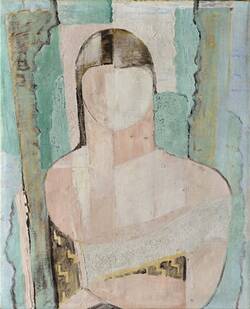Weitere Medien
Štyrský graduated from the Academy of Fine Arts in Prague [Akademie výtvarných umění v Praze (AVU)]. Starting in 1923, he was a member of the left-wing avant-garde cultural association, Devětsil, and in 1932 he joined the Mánes Association of Fine Artists. He was extremely active on the art scene and became well known not only as a photographer, painter and graphic artist, but also as a poet and art theorist. His early artistic work was influenced by
Cubism, but later he became an icon of Czech Surrealism.
In 1922 Jindřich Štyrský met Toyen, who was destined to be his soul mate, and they became artistic partners. Between 1925 and 1928 they lived together in Paris, where they founded their own branch of Surrealism, which they called Artificialism. They thereby sought to bridge the gap between the poetry they had encountered in Devětsil, and Surrealism, the point of transition between reality and abstraction. Today, these two artists are among the most prominent and most frequently cited representatives of Czech Surrealism. One of the typical examples of Štyrský's work at the time when he joined and became active in the Devětsil group is the painting Jaro [Spring], produced in 1923.
In association with the painter Toyen, the psychoanalyst Bohuslav Brouk, the poet Vítězslav Nezval, the sculptor Vincenc Makovský, and the theorist Karel Teige, and under the influence of André Breton's Second Manifesto of 1924, he founded the Surrealist Group of Czechoslovakia in 1934. Despite the dramatic changes after the Second World War, and especially after the occupation of Czechoslovakia by the Warsaw Pact troops in 1968, the Surrealist movement continues to exist today, thanks in part to the filmmaker, writer, and artist Jan Švankmajer.
Štyrský's imaginative photographic series constituted an attempt to create Surrealist photography, both in urban settings and in natural environments. He became known for
his unique imaginative style and he also worked intensively with colour collages. Dreams
were among his most important sources of inspiration.
SPRING, 1923
GIRL / ABSTRACT COMPOSITION, 1923–1924
AQUARIUM, 1927
PALM FROND, 1931
MAN AND WOMAN, 1934
b. 1899 in Dolní Čermná near Kyšperk, Kingdom of Bohemia
d. 1942 in Prague
